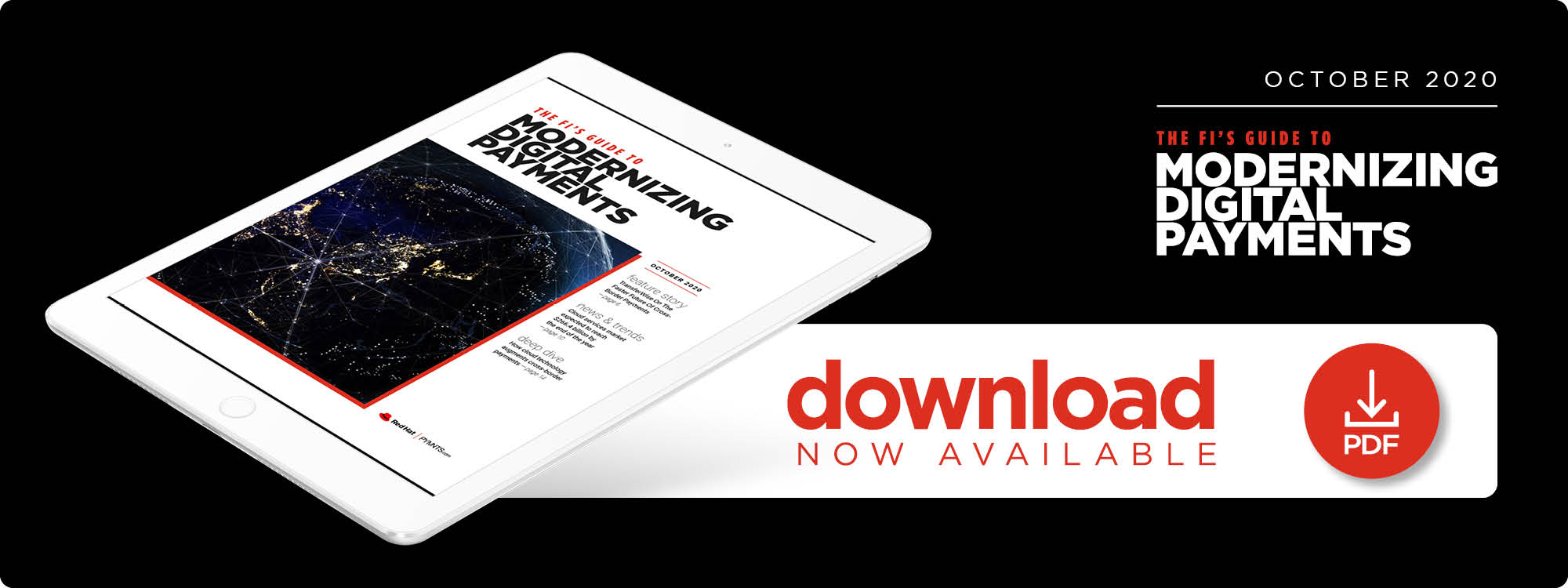TransferWise On The Faster Future Of Cross-Border Payments

Cross-border payments continue to be notorious for being slow and costly, with each FI involved in processing the transaction attaching additional fees. In this month’s The FI’s Guide To Modernizing Digital Payments, Nicholas Lembo, head of Americas growth for TransferWise, discusses how leveraging inter-bank networks can help FIs move away from the old-school correspondent banking and facilitate transactions that are both swift and cost-effective.
Many transactions made in today’s highly digital world are handled without senders or recipients ever physically touching the money. Consumers send funds by tapping or swiping payment cards, clicking a few buttons on banking websites or payment apps, or keying details into online checkout pages, which payees receive via bank accounts or digital wallets. This kind of digital environment ought to open the door to rapid-fire payments — even for transactions that move across country borders and convert into different currencies — but legacy approaches often hold banks back from providing such swift international transactions, according to Nicholas Lembo, head of Americas growth for London-based money transfer service TransferWise.
“Moving money from one currency to another sounds like it should be pretty straightforward, especially in an era where moving money is basically moving bits of information across the internet,” Lembo said in a recent interview with PYMNTS. “It should be as cheap and easy as sending an email — because it’s essentially just packaging information the same way — but it’s not.”
The traditional correspondent banking network is one major speedbump that stops financial institutions (FIs) from providing speedy, inexpensive, cross-currency and cross-border transfers, Lembo explained, but financial services providers can adopt new technology and approaches to safely streamline these transactions.
Kicking Free Of Correspondent Banking
FIs seeking to send funds from one country to another are often not set up to directly transfer money to recipients’ banks. International payments instead pass through a handful of different banks — each one handing the transactions off to the next player — before reaching their final destinations.
“If I wanted to send money from Australia back to my parents in the U.S., the money doesn’t actually go from my Australian bank account straight into my parents’ credit union account,” Lembo said. “It actually goes to my Australian bank’s correspondent bank, probably in Southeast Asia [in] Hong Kong or Singapore. They might send it to another clearing bank somewhere else in Europe or Asia, and it eventually may bounce between even two or three more banks before it arrives at the recipient in the U.S.”
This method involves many steps, creating a longer process, and adds costs because each participating bank charges a fee for its role in transmitting the funds. Lembo said that a swifter, simpler way of offering international payments would mean that financial services providers create and leverage their own networks of local bank accounts in countries around the world. This enables a money transfer provider to accept funds from consumers in one country via its local operation and then direct the accounts it holds in the recipients’ countries to pay out the amounts due after adjusting for foreign exchange rates.
“The money never actually crosses borders,” Lembo explained.
Avoiding sending money between different financial players and instead balancing funds between a single company’s own various accounts allows a money transfer service provider to streamline operations, resulting in quicker transactions. It also means that the provider can remove the fees that intermediaries would have charged.
Staying Secure
Companies looking to modernize the cross-border payments space must attend not only to speed but also security. These players need to be wary of fraud or they will lose customers and risk being fined or shut down. Fraudsters are often eager to abuse international payment services to transfer ill-gotten funds and finance criminal operations, so FIs and other money transfer organizations must carefully follow the anti-fraud regulations of each country in which they operate.
“Compliance with our licenses is a big part of making sure our business works and is compliant with the letter of the law and is also a big part of how customers know they can trust us as well,” Lembo said.
Keeping up with regulations around international fund transfers involves checking to ensure that recipients are not in countries that have been blacklisted or placed under financial sanctions. It also entails performing a variety of checks on customers who are looking to send money, including anti-money laundering (AML), counter-terrorist financing (CTF) and know your customer (KYC) evaluations.
Tapping advanced technologies can help financial service providers manage compliance effectively, Lembo said. These companies can use machine learning (ML) tools that check transactions for red flags and then alert staff in cases where deeper manual review is needed, for example.
Consumers are living in an ever-more connected world, and their demand for swift and affordable cross-border payments is likely to continue and even heighten. Financial service providers looking to win bigger shares of this market will likely need to be able to assure customers that their money will arrive safely and on time.

